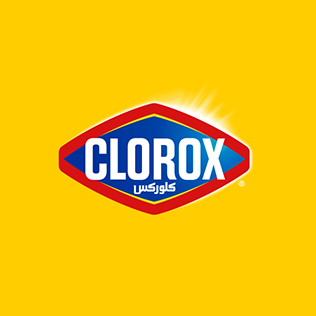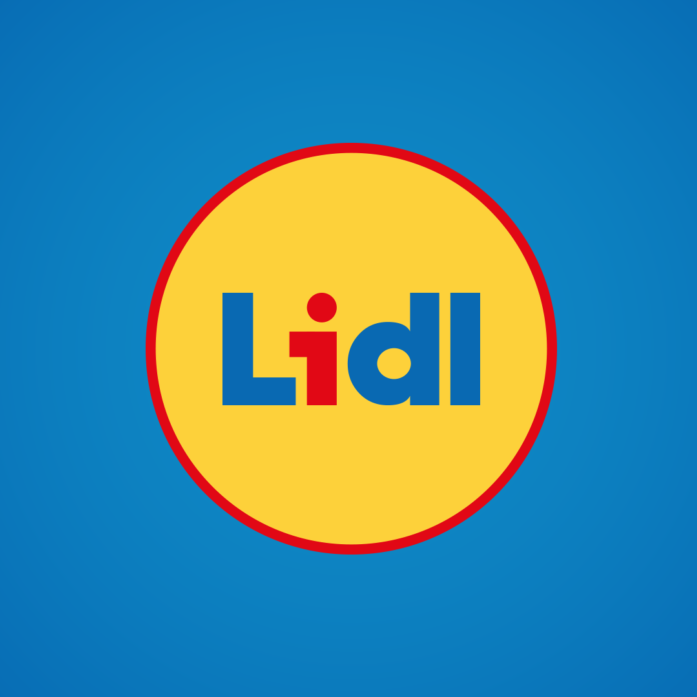What is Brand?
A brand is a unique name, design, symbol, or other feature that identifies and distinguishes a product, service, or company from its competitors. It is a promise to customers of a certain level of quality, consistency, and experience.
We CAN HELP YOU CREATE YOUR BRAND
How to build a brand
Research and Positioning
Analyze the market, identify target audience, differentiate from competitors, and position the brand strategically.
Pick your Brand Name
Choosing a brand name is crucial; opt for concise, memorable names, often abbreviations or simple words.
Create your Brand Story
Harness the power of storytelling in your marketing to create a strong emotional connection with customers.
Write your Brand Slogan
Craft a concise, consistent slogan that fits various spaces, aligns with your brand, and sticks in customers’ minds.
Establish Brand Identity
Create a cohesive visual identity with logo, colors, typography, and imagery that reflect your brand and engage your audience.
Register your Business
Complete the legal registration process to formally establish your business in compliance with regulations.
Register your Trademark
File a trademark application with the relevant intellectual property office to register and protect your trademark.
Launch your Brand
Once you’ve established the foundation of your brand, and then confidently launch your brand into the market.
Integrate your Brand into your Business
Build a strong brand culture by seamlessly integrating its core values, messaging, and visual identity into every aspect of your business.
Support Given
Clients Rating
Influencer
Money Saved
Sales Revenue
Follow These Steps to Create your Brand
Research and Positioning
This involves understanding who your ideal customers are and their preferences, demographics, and behaviors. Additionally, analyzing market trends helps you stay informed about industry developments, consumer demands, and emerging opportunities.
By studying your competitors, you can gain insights into their strengths, weaknesses, and how they position themselves in the market. This analysis helps you identify gaps in the market and find unique ways to differentiate your brand.
Market research involves collecting data and information about your target audience, such as their needs, preferences, purchasing habits, and feedback. This data helps you make informed decisions and tailor your brand to meet customer expectations.
Your brand proposition defines the unique value and benefits your brand offers to customers. It answers the question, “Why should customers choose your brand over competitors?” The value proposition focuses on the specific benefits customers will receive by choosing your brand.
Brand positioning involves determining how you want your brand to be perceived in the market. This includes identifying your unique selling points, key differentiators, and the emotional or rational benefits your brand provides. It helps you communicate your brand’s value and relevance to your target audience effectively.
Pick your Brand Name
1.Keep it simple and easy to pronounce: Choose a name that is straightforward and can be easily spoken and understood by your target audience.
2.Reflect your brand’s identity: The name should align with your brand’s values, mission, and the image you want to portray.
3.Make it memorable: Aim for a name that stands out and is easy to remember. Avoid overly complex or generic names.
4.Consider the target audience: Understand your target market and choose a name that appeals to their preferences and resonates with their interests.
5.Conduct a trademark search: Ensure the name is unique and not already trademarked to avoid legal issues in the future.
6.Test for international suitability: If you plan to expand globally, check if the name has any negative connotations or misinterpretations in other languages.
7.Check domain availability: Secure a domain name that matches or closely relates to your brand name for an effective online presence.
8.Think about future growth: Select a name that allows for future expansion and won’t limit your brand’s potential.
9.Get feedback: Seek input from trusted individuals, colleagues, or focus groups to gather different perspectives on the name options.
10.Trust your instincts: Ultimately, choose a name that you feel confident about and that reflects the essence of your brand.
Remember, your brand name is a crucial element of your overall brand identity, so take your time, do your research, and select a name that will resonate with your target audience and help differentiate your brand in the market.
An entity name can protect the name of your business at a state level. Depending on your business structure and location, the state may require you to register a legal entity name.
Choose a unique entity name that complies with state regulations, ensuring it reflects your business and is not already registered by someone else; consult your state’s guidelines for registering your business name.
A trademark can protect the name of your business, goods, and services at a national level. Trademarks prevent others in the same (or similar) industry in the United States from using your trademarked names.
Registering a DBA (Doing business as) — also known as a trade name, fictitious name, or assumed name, may be necessary based on your business location and structure. While it doesn’t provide legal protection, many states require it. Even if it’s not required, registering a DBA can still be useful for branding purposes and to operate your business under a name that’s different from your personal or formal business entity name.
If you want an online presence for your business, start by registering a domain name — also known as your website address, or URL.
Registering your domain name protects your brand online, ensuring exclusivity; it doesn’t have to match your legal business name, allowing flexibility; choose a reputable registrar for the best price and customer service, and remember to renew your registration regularly.
Create your Brand Story
1.Identify the Hero: Give a face to your customer and build buyer personas to help them relate to your brand.
2.Establish Conflict: Assess what your customer wants or needs, expose the practical need, and appeal to their emotions.
3.Position as the Guide: Show why your brand is the solution to their dilemma and highlight the differences between your brand and the competition through client testimonials.
4.Create Climax: Illustrate the potential negative impact of not choosing your solution and deliver a compelling call to action.
5.Offer Resolution: List several promises that customers can rely on if they choose your brand and demonstrate how their decision will lead to success.
6.Supplement Mission Statement: Incorporate storytelling into your brand’s mission statement to explain its purpose and beliefs.
7.Incorporate Story into Marketing: Once your brand story is established, integrate it into advertisements and landing pages.
8.Provide a Solution: Like Burt’s Bees, address the customer’s problem and dilemma, and offer the perfect solution that aligns with their needs, such as natural products.
By following these points, you can create a compelling brand story that resonates with your audience and differentiates your brand from competitors.
Write your Brand Slogan
1.Be brief and descriptive: Create a slogan that can easily fit in various spaces and conveys the essence of your brand.
2.Ensure memorability and consistency: Make your slogan concise, easy to remember, and in line with your overall branding strategy.
3.Avoid conflicting messages: Ensure that your slogan aligns with your brand’s identity to avoid confusing customers.
4.Use metaphors: Employ metaphors to evoke emotions or convey the unique aspects of your brand.
5.Capture an attitude: Express the spirit or mindset associated with your brand to resonate with your target audience.
6.Describe what you do: Clearly communicate the purpose or objective of your brand in a concise and compelling manner.
7.Highlight benefits: Showcase the advantages or unique value that your brand offers to customers.
8.Utilize catchy rhymes or sayings: Create a slogan that is memorable, engaging, and potentially rhymes to leave a lasting impact.
9.Adapt and refine: Be open to tweaking and adjusting your slogan based on audience feedback and market dynamics.
10.Learn from others: Study successful slogan examples from different companies to gain inspiration and insights.
Remember, a brand slogan can evolve over time as you refine your messaging and connect with your target audience. Stay adaptable and responsive to ensure your slogan resonates effectively.
Establish Brand Identity
The visual identity of a brand refers to the visual elements that represent and distinguish the brand’s identity. It includes the visual aspects that shape how the brand is perceived visually by its target audience. The visual identity typically consists of the following components:
1.Logo: The logo is a unique and recognizable symbol or design that represents the brand. It serves as a visual mark of identification and is often the most prominent element of a brand’s visual identity.
2.Colors: The chosen colors or color palette associated with the brand create a visual impact and convey specific emotions or associations. Consistent use of colors helps in brand recognition and evokes desired feelings from the audience.
3.Typography: The fonts and typographic styles used in brand materials play a significant role in establishing the brand’s personality and conveying its message. Different fonts can evoke different emotions and convey different tones.
4.Imagery and Graphics: The selection and use of imagery, such as photographs, illustrations, or graphics, contribute to the visual representation of the brand. The style, tone, and subject matter of the visuals should align with the brand’s values and resonate with the target audience.
5.Design Elements: Various design elements, such as patterns, shapes, icons, or textures, can be incorporated into the visual identity to create a distinct and cohesive brand look. These elements add visual interest and reinforce brand recognition.
6.Layout and Composition: Consistent layout and composition principles help maintain visual harmony and coherence across different brand materials, such as websites, advertisements, packaging, and printed materials.
7.Brand Guidelines: Brand guidelines provide detailed instructions and specifications on how to use the visual elements consistently across various platforms and mediums. They ensure that the brand’s visual identity remains cohesive and recognizable.
The visual identity of a brand plays a crucial role in creating a strong and memorable brand presence. It helps differentiate the brand from competitors, establishes a connection with the target audience, and communicates the brand’s values, personality, and positioning effectively.
1.Consider different logo types such as mascots, emblems, abstract logos, monograms, wordmarks, icons, and combination logos.
2.Choose a logo type that aligns with your business and marketing goals.
3.Use mascots to humanize your brand and create familiarity.
4.Emblems combine text and imagery, often in a circular shape.
5.Abstract logos focus on shape and color to create a distinct visual identity.
6.Monograms or lettermarks use one or more letters from the brand name to create a symbol.
7.Wordmarks rely on typography and color to showcase the brand name.
8.Icons create a visual metaphor for the brand and can represent a specific aspect of the business.
9.Combination logos combine different types, such as text with an image or icon, to convey a comprehensive brand identity.
Register your Business
Turn your business into a reality. Register, file, and start doing business.
1.Choose a business structure
2.Select your state
3.Choose your business name
4.Choose a registered agent
5.Register your business
6.Get federal and state tax ID numbers
7.Apply for licenses and permits
8.Open a business bank account
9.Get business insurance
10.Stay legally compliant
For more details and assistance, please refer to: Register your Business
Register your Trademark
1.Conduct a trademark search: Before registering a trademark, it’s important to conduct a comprehensive search to ensure that your desired trademark is not already registered or being used by another entity. This helps avoid potential conflicts and infringement issues.
2.Determine the trademark classification: Trademarks are registered under specific classes or categories that relate to the goods or services they represent. Identify the appropriate class(es) for your trademark to ensure proper registration.
3.Prepare the application: Gather all the required information and documentation for the trademark application. This typically includes the applicant’s details, a clear representation of the trademark, and a description of the goods or services associated with the trademark.
4.Submit the application: File the trademark application with the relevant intellectual property office in your country or region. Pay the required filing fees at this stage.
5.Examination and review: The trademark office will examine your application to ensure it meets the necessary requirements and is not conflicting with existing trademarks. This may involve a formal examination and a search for similar trademarks.
6.Publication and opposition: If your application passes the examination stage, it may be published in a trademark gazette or publication to allow others to oppose the registration within a specified period. If no oppositions are filed, the process continues.
7.Registration and issuance: If there are no oppositions or if they are successfully resolved, the trademark will be registered, and a registration certificate or trademark registration number will be issued.
It’s important to note that the trademark registration process can vary depending on the country or region. It’s advisable to consult with a trademark attorney or intellectual property professional to ensure a smooth and successful registration process.
Launch your Brand
Here are some points to consider when executing a memorable launch event:
1.Determine the event format: Choose the event format that best aligns with your brand and target audience. It could be a grand opening ceremony, a product demonstration, a panel discussion, a live stream event, or a social media campaign. Consider the preferences and interests of your audience when selecting the format.
2.Create a captivating theme: Develop a theme or concept for your launch event that reflects your brand’s personality and values. This theme should resonate with your target audience and create a memorable experience. Use creative elements such as decorations, visuals, music, and branding materials to enhance the theme.
3.Engage influencers and partners: Collaborate with influencers, industry experts, or brand ambassadors who can amplify your brand message and reach a wider audience. Partnering with influencers can generate excitement, credibility, and social media buzz around your launch event.
4.Provide exclusive experiences: Offer exclusive experiences or perks to attendees or early adopters of your brand. This could include special discounts, giveaways, limited edition products, or access to VIP areas. Creating a sense of exclusivity can generate anticipation and attract attention.
5.Leverage media coverage: Invite media outlets, journalists, and bloggers to attend your launch event. Prepare press releases, media kits, and captivating visuals to capture their attention and secure media coverage. This can help increase brand exposure and reach a broader audience.
6.Utilize social media and online platforms: Leverage social media channels and online platforms to extend the reach of your launch event. Create engaging content, live stream parts of the event, encourage user-generated content, and utilize relevant hashtags to generate online conversations and increase visibility.
7.Create interactive experiences: Incorporate interactive elements into your launch event to engage attendees and create a memorable experience. This could include product demonstrations, interactive displays, games, contests, or live performances. Encourage attendees to participate and share their experiences on social media.
8.Capture and share content: Hire professional photographers and videographers to capture high-quality visuals of your launch event. This content can be used for post-event promotion, social media posts, website updates, and future marketing materials. Encourage attendees to share their photos and videos using event-specific hashtags.
9.Follow up with attendees: After the launch event, follow up with attendees to thank them for their participation and gather feedback. This can be done through personalized emails, surveys, or social media engagement. Address any inquiries or concerns promptly and maintain a positive relationship with attendees.
Remember, the key is to create a launch event that leaves a lasting impression on attendees, generates excitement, and generates positive word-of-mouth. Tailor the event to your brand’s identity and target audience, and ensure it aligns with your overall marketing strategy.
Integrate your Brand into your Business
1.Create a style guide: Develop a comprehensive style guide that outlines the visual, verbal, and experiential elements of your brand. This guide serves as a reference for your team, ensuring consistency in how your brand is presented across various channels. It includes guidelines for brand voice, tone, language, imagery, typography, colors, and overall design aesthetics.
2.Align your brand’s voice and presence: Ensure that your brand’s personality, values, and messaging are consistently reflected in all aspects of your business. From social media posts to marketing campaigns and website design, your brand’s voice and presence should be evident. Make sure that the communication style, visuals, and overall experience align with your brand’s identity and resonate with your target audience.
3.Emphasize customer-centric experiences: Take inspiration from brands like Warby Parker and focus on creating engaging experiences for your customers. Consider both online and offline touchpoints, such as website interactions, product packaging, customer service, and in-store experiences. Ensure that the design, functionality, and customer interactions reflect your brand’s values and enhance the overall customer experience.
4.Consistent messaging across platforms: Maintain consistent messaging across different brand platforms, including social media, website, advertising campaigns, and offline marketing materials. Use plain language that resonates with your target audience and clearly communicates the benefits of your products or services. This consistency helps build brand recognition and trust among customers, regardless of the platform they interact with.
5.Incorporate brand elements into physical spaces: If you have physical locations or retail spaces, extend your brand’s visual identity and design principles to these environments. Consider the layout, signage, colors, and overall ambiance to create a cohesive and immersive brand experience. Align the physical spaces with your brand’s values and ensure that they reflect the same aesthetics and atmosphere as your online presence.
6.Train and educate employees: Ensure that your employees understand and embody your brand’s values, voice, and customer-centric approach. Provide training and ongoing education to align them with the brand’s identity and customer experience goals. This ensures consistent messaging and brand representation across all customer interactions.
7.Regularly review and update: Continuously evaluate and update your brand integration efforts. Monitor customer feedback, market trends, and evolving business goals to ensure that your brand remains relevant and aligned with your target audience. Make adjustments to your style guide, messaging, and brand presence as needed to maintain consistency and effectiveness.
By following these points, you can integrate your brand cohesively throughout your company, creating a unified voice, visual identity, and customer experience that aligns with your brand’s values and resonates with your target audience.
Valuable Brands









